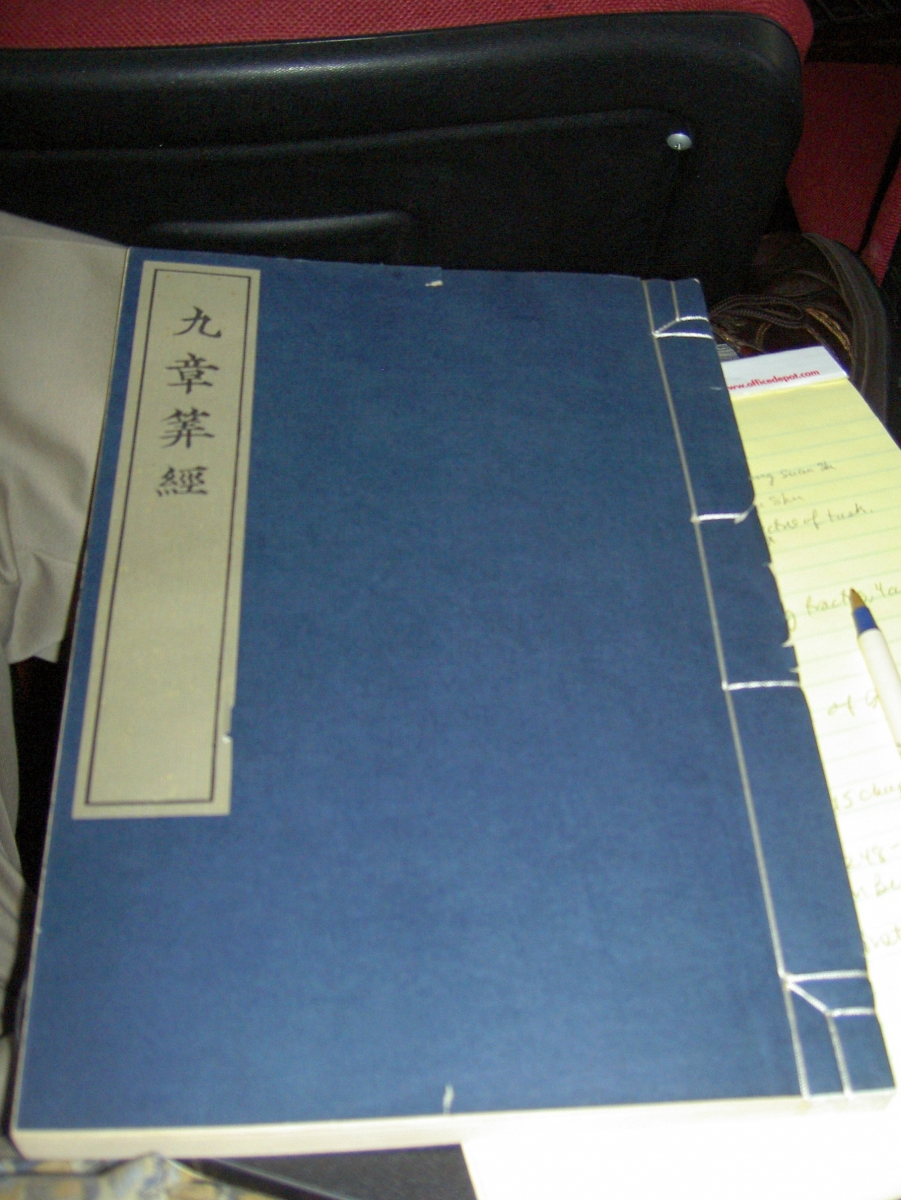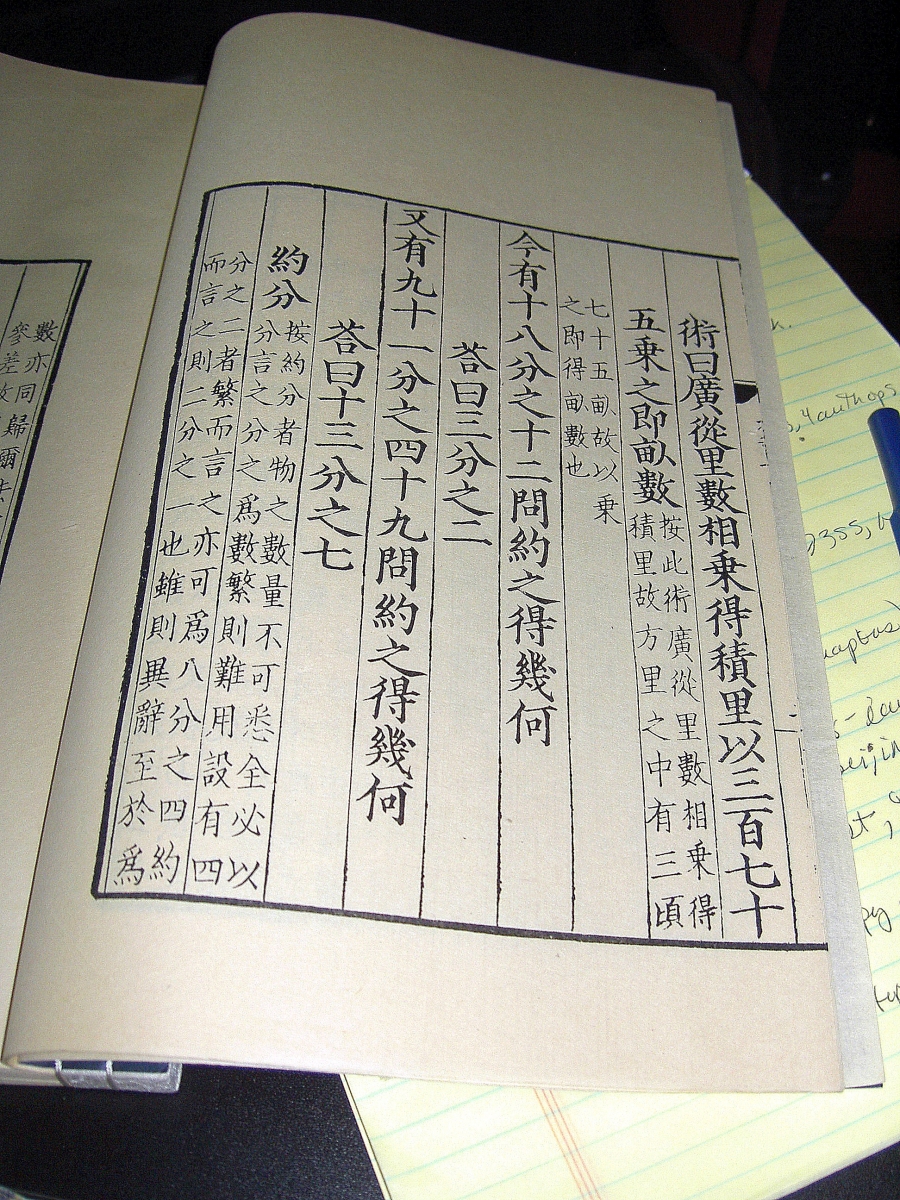- About MAA
- Membership
- MAA Publications
- Periodicals
- Blogs
- MAA Book Series
- MAA Press (an imprint of the AMS)
- MAA Notes
- MAA Reviews
- Mathematical Communication
- Information for Libraries
- Author Resources
- Advertise with MAA
- Meetings
- Competitions
- Programs
- Communities
- MAA Sections
- SIGMAA
- MAA Connect
- Students
- MAA Awards
- Awards Booklets
- Writing Awards
- Teaching Awards
- Service Awards
- Research Awards
- Lecture Awards
- Putnam Competition Individual and Team Winners
- D. E. Shaw Group AMC 8 Awards & Certificates
- Maryam Mirzakhani AMC 10 A Awards & Certificates
- Two Sigma AMC 10 B Awards & Certificates
- Jane Street AMC 12 A Awards & Certificates
- Akamai AMC 12 B Awards & Certificates
- High School Teachers
- News
You are here
Illustrating The Nine Chapters on the Mathematical Art - In the Classroom: Field Measurement
Chapter 1, "Field Measurement"
When I discuss Chapter 1, "Field Measurement," with my students, I use photographs of a 1981 reproduction of a 1248 edition of the Nine Chapters, taken at the Institute for the History of Natural Sciences in Beijing; see, for example, Figures 7 and 8, below.
Figure 7. In this image of a 1981 reproduction of a 1248 edition of the Nine Chapters, it is clear that the book opens from the left, so that it is to be read from right to left (photo by the author).
Figure 8. Problem 5 is presented on an early page in the first chapter, “Field Measurement,” of the Nine Chapters (photo by the author).
The text of Problem 5 (see Figure 8, above) is in columns. In my class, we have discussed the relevant Chinese numeration system, so that I ask my students to find the numerals in the fourth column from the right. Typically, someone readily finds the numerals 18 (the third and fourth characters from the top) and 12 (the seventh and eighth characters from the top). In the next column, the fifth column from the right, they find the numerals 3 (the third character from the top) and 2 (the bottom character). With a little questioning, the students offer that this page shows something equivalent to the reduction of the fraction 12/18 to 2/3 [Shen 64].
Chapter 1 "Field Measurement" also includes the computation of the area of a circle. Two problems (31 and 32) and four rules are given to compute the area of a circular field. The data of the problems indicate a value of 3 for \(\pi\) (e.g., the circumference is 30 units and the diameter 10 units). Had the diameter and the circumference been correct, the first rule, "Multiplying half the circumference by the radius" [Shen 88], would yield the correct result. Thirteenth-century commentators Li et al. suggest using 22/7 for \(\pi,\) while Liu suggests using 157/50, the familiar 3.14, for \(\pi\) [Shen 92]. According to Shen, Li et al. seemed to ignore the work of Zu Chongzhi, who in the 5th century computed \(\pi\) to be between 3.1415926 and 3.1415927.
Figure 9 (below) shows a wax figure of Zu Chongzhi carrying out his computations, from the Chinese National Museum near Tiananmen Square. It is a treat to see a mathematician recognized this way. Other wax figures included sports heroes (including Michael Jordan), political figures, and western scientists (Isaac Newton, Albert Einstein, and Bill Gates!).
Figure 9. A wax figure of Zu Chongzhi carrying out his computations is in the Chinese National Museum in Beijing (photo by the author).
For a photograph of Liu Hui’s computation of \(\pi\) by the method of exhaustion, as shown in a 16th century copy of The Nine Chapters on the Mathematical Art, see Mathematical Treasures – Jiuzhang suanshu in MAA Convergence.
Joel K. Haack (University of Northern Iowa), "Illustrating The Nine Chapters on the Mathematical Art - In the Classroom: Field Measurement," Convergence (April 2017)







